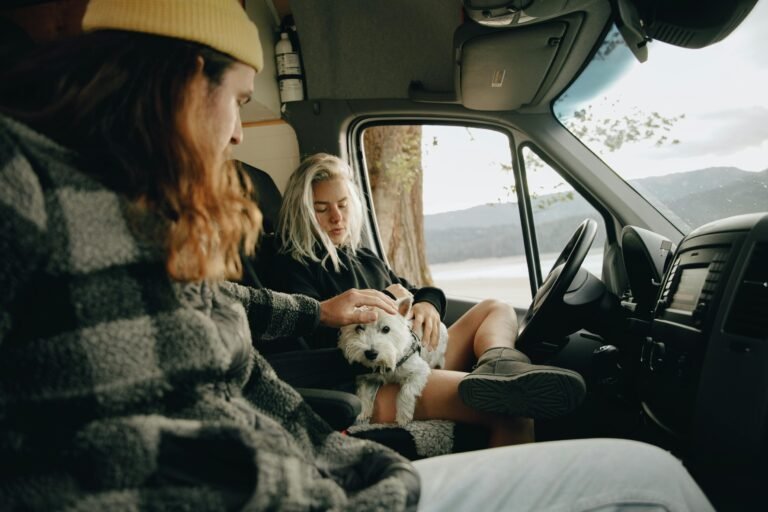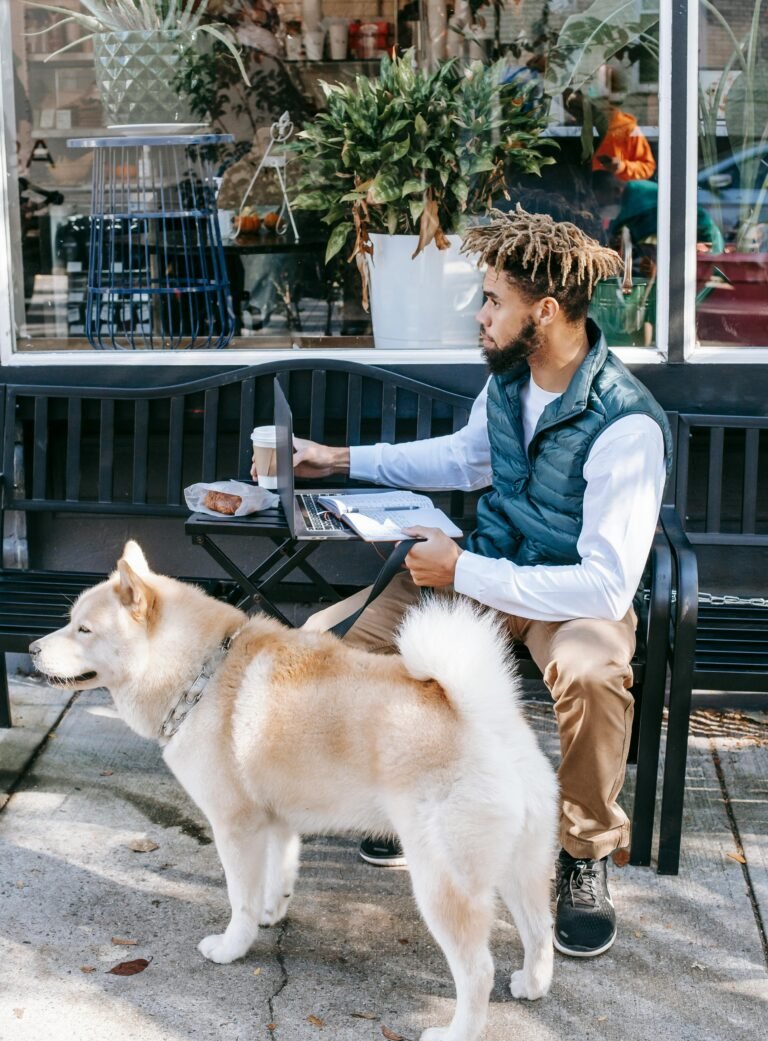Introduction
Embarking on a road trip with your dog can transform a simple journey into a memorable adventure. Dogs love exploring new sights and smells, and many owners relish having their four‑legged companions along for the ride. However, a successful trip requires more than tossing your pup in the back seat and heading for the highway. Cars are unfamiliar environments for many dogs; without proper preparation, long drives can cause anxiety, motion sickness or dangerous distractions. Planning ahead ensures that both you and your dog stay comfortable and safe on the open road.
This guide covers essential tips to help you prepare your dog for a road trip, from selecting the right safety equipment to packing travel essentials. By following these recommendations, you can reduce stress and create a positive travel experience for your canine companion. Whether you’re driving across state lines or heading to a nearby national park, these best practices will help you both enjoy the journey.
Acclimating your dog to car travel
If your dog is not accustomed to spending time in a vehicle, start your preparations well before departure day. The American Kennel Club notes that gradually introducing your dog to car rides helps prevent anxiety and motion sickness【754388870791961†L45-L117】. Begin by letting your dog sit in a parked car with the engine off so he can explore the space and associate it with positive experiences. Offer treats, praise and his favorite toys to build a positive association. Once he appears relaxed, take short drives around the block, gradually increasing the duration of each trip. Practice using the crate or safety harness you plan to employ for the road trip so your dog becomes comfortable with the restraint.
Avoid feeding your dog right before driving, as a full stomach can contribute to nausea. Instead, offer a light meal a few hours before departure and provide small snacks during breaks. If your dog shows signs of motion sickness or severe anxiety, consult your veterinarian. They may recommend medication or pheromone products to help ease discomfort. Never give human medications without professional guidance.
Choosing proper safety equipment
Allowing your dog to roam freely in the car is dangerous for both of you. In a collision or sudden stop, an unrestrained animal can become a projectile, injuring passengers or itself. To keep your dog secure, invest in a crash‑tested safety harness, a dog seat belt or a well‑fitted crate. The AKC suggests either a harness attached to a seat belt or a sturdy carrier that can be secured in place【754388870791961†L146-L161】. When selecting a harness, look for products tested by third‑party organizations to ensure they meet safety standards.
Crates or carriers should be large enough for your dog to stand, turn and lie down comfortably. Hard‑sided crates provide better protection than soft carriers, but soft carriers with reinforced frames may be easier to handle for small dogs. Secure the carrier with the seat belt or cargo straps so it doesn’t slide around corners. Line the bottom with familiar bedding to create a cozy den and absorb any accidents. For dogs that like to look out the window, raised booster seats with integrated seat belts can provide a higher perch while keeping them restrained.
Never allow your dog to ride with his head out the window. While dogs may enjoy the wind, flying debris, insects and sudden stops can injure their eyes, ears or neck. Keep windows only partially open for ventilation and use the vehicle’s climate control to maintain a comfortable temperature.
Packing the essentials
A well‑packed travel kit helps you handle unexpected situations on the road. Consider including the following items in your dog’s travel bag:
- Leash and collar with updated ID tags: Make sure your phone number is on the tag and that your dog is wearing it at all times. Microchip your dog and ensure the registry details are current.
- Food and water: Bring enough of your dog’s regular food to last the entire trip and some extra in case of delays. Changing food abruptly can cause digestive upset. Pack collapsible bowls and several gallons of fresh water; dogs can become dehydrated quickly, especially in warm weather.
- Treats and toys: Familiar treats and chew toys will help occupy your dog during drives and provide comfort in unfamiliar environments.
- First aid kit: Include essentials like bandages, tweezers, antiseptic wipes, gauze, a digital thermometer, styptic powder, and any prescription medications your dog takes regularly. Carry a printed copy of your dog’s vaccination records and your veterinarian’s contact information in case of emergencies.
- Blankets and towels: Bring a favorite blanket or bed to make your dog’s crate or seat more comfortable. Extra towels can help dry your dog after unexpected rain or swimming stops.
- Waste bags and cleaning supplies: Stock up on poop bags and pack paper towels, pet‑safe disinfectant and a small trash bag to handle accidents.
Preparing these items ahead of time will minimize stress when you’re miles from the nearest pet store.
Scheduling breaks and maintaining routines
Dogs need regular bathroom breaks and opportunities to stretch their legs. Plan to stop every two to three hours during long drives. At each rest stop, leash your dog before opening the car door to prevent escapes. Look for pet‑friendly rest areas or parks where your dog can sniff around and expend energy. Maintaining a routine is key to preventing digestive upset and anxiety, so feed and walk your dog at times similar to your regular schedule.
Never leave your dog alone in a parked car, especially in warm weather. Temperatures inside vehicles can rise rapidly, even on mild days, leading to heatstroke or suffocation. If you must stop for food or fuel, choose establishments with drive‑throughs or have a travel companion stay with the dog while you go inside.
Choosing pet‑friendly accommodations
Research pet‑friendly hotels, campgrounds or vacation rentals ahead of your trip. Many accommodations welcome dogs but have rules regarding size, number of pets, pet fees and designated areas. Call ahead to confirm policies and request a ground‑floor room for easier potty breaks. Bring your dog’s crate and bedding to help him feel at home and to prevent damage to the property. Be considerate of other guests by keeping your dog quiet and cleaning up promptly after him.
When staying in a new environment, dog‑proof the room by checking for hazards like exposed wires, unattended food and small objects your dog could swallow. Keep your dog leashed when walking through hotel halls or campgrounds, and respect local leash laws.
Road trip etiquette and additional tips
Some extra considerations will make your journey smoother:
- Exercise before departure: Take your dog for a long walk or play session before hitting the road to burn off excess energy.
- Car hygiene: Regularly vacuum hair and wipe down surfaces to keep the car clean and odor‑free. Use seat covers to protect upholstery.
- Calming aids: If your dog experiences anxiety, talk to your vet about natural supplements, pressure wraps or prescription medications. Calming pheromone sprays and diffusers can also help.
- Sun protection: Use window shades or a cooling mat to prevent your dog from overheating in the back seat. Dogs with light‑colored coats may need canine‑friendly sunscreen on noses and ears during sunny stops.
- Flea and tick prevention: Ensure your dog is up to date on flea, tick and heartworm preventatives, especially if you will be camping or hiking in wooded areas.
- Vet check: Schedule a health check before the trip to ensure your dog is fit for travel. Update vaccinations and ask your vet for advice on traveling with dogs, especially if crossing state borders.
Conclusion
Traveling with your dog isn’t just about reaching a destination – it’s about enjoying the journey together. By gradually acclimating your dog to the car, investing in reliable safety equipment, and packing thoughtfully, you set the stage for a stress‑free trip. Plan regular breaks, maintain routines and choose accommodations that welcome pets to keep your dog comfortable along the way. With patience and preparation, road trips can strengthen the bond between you and your canine companion and lead to unforgettable shared adventures. Remember, each dog is unique; pay attention to your dog’s cues and adapt your travel plans accordingly. When both human and canine needs are met, the open road becomes a place of discovery and joy for everyone on board.






